Welcome, new readers
Sundman figures it out! is an autobiographical meditation, in the spirit of Michel de Montaigne, of a 71 72 year old guy who lives with his wife in a falling-down house on a dirt road on Martha’s Vineyard that dead-ends into a nature preserve.
Incidents, preoccupations, themes and hobbyhorses appear, fade, reappear and ramify at irregular intervals. If you like this essay I suggest checking out a few from the archives. These things are all interconnected.
Précis
As I prepare to head to San Jose three weeks from now to attend the Global Synthetic Biology Conference, at which I’m scheduled to be on a panel about how culture, science and technology influence each other, I look back on my long accidental career in technopotheistic philosophizing and bioethical punditry, and I look forward to taking the pulse, in San Jose, of genetic engineers, visionary laid-off scientists, biohacking hypercapitalists, frightened biosecurity experts, ambient AIs casually designing new life-forms as party favors, refugees from the National Institutes of Health and National Science Foundation, narcissistic TESCREAL gurus, and tennis-shoe wearing regular folk like me and you just trying to make sense of our new post-Constitutional Max Headroom reality of faux-de-extincted Dire Wolves and mRNA databases passed around like samizdat.
As Lincoln’s government of the people, by the people, and for the people mutates before our eyes into government of the broligarchs, by the broligarchs, and for the broligarchs; as an antivax, profoundly ignorant, and supremely arrogant narcissistic eugenicist madman in the model of Stalin’s New Age mass murderer Trofim Lysenko is put in charge of American science; and as real, actual, science for the benefit of all humankind, in the United States of America, is put to the sword, I offer a few observations & reminiscences.
A three-thirty AM epiphany in the laboratory of the molecular biologist with the great figure
Long-time faithful readers of Sundman figures it out! are of course familiar with tales of the Molecular Biologist with the Great Figure that I met at that vegetarian Thanksgiving potluck supper hosted in a warehouse loft by the lesbian artist’s collective in Lafayette, Indiana, November 18, 1978. Perhaps you recall her legendary quip about the novels of Ayn Rand, or the account of when James Watson hit on her at a lobster bake after her standing-room only talk at the Cold Spring Harbor Phage Symposium. Here’s the capstone vignette:
It so happens that some weeks after meeting that biologist at that Thanksgiving affair I found myself in her bed for the first time. At 3 AM, when I was deep in well-earned slumber, her alarm clock went off and she got out of bed and began to get dressed. Now, I was never exactly what one might call a “ladies’ man,” but neither was I totally inexperienced with women and I had never seen nor heard of such behavior.
“I have to go to the lab,” she said. “I have to start a gel.”
I was given permission to tag along. It was a 15 minute walk across the Purdue campus to the Life Sciences buliding. What a ‘gel’ might be was only one of a couple of dozen mysteries which this person had introduced into my heretofore placid life.
She had keys to the building and to her laboratory. We walked down the long, dimly lit hallway, then entered the lab. She turned on the lights, donned a white lab coat, wrapped her long hair in bun and put a pencil through it.
To give you an idea of what I was dealing with, imagine the head of a 30 year old Jane Curtin sitting atop the body of a 30 year old Brigitte Lahaie. Breathtaking is an understatement.
At one point she had to inject something into something else — who knows what — which she did using a hypodermic syringe. In so doing she accidentally jabbed the base of her left palm.
“Oh darn,” she said, as a little bit of blood appeared. “This stuff is quite carcinogenic. So If I die a horrible death thirty years from now in the name of science, you can say you saw it happen.”
Reader, I am no Superman. I am not made of steel. In that moment my fate was sealed. I was a goner and I knew it. So if you’ve been wondering how a guy with an M.S. in agricultural economics with a concentration in west African smallholder farming systems became a molecular biology obsessive, now you know.
That SynBioBeta panel
Here’s the abstract of the panel I’ve been invited to sit on:
Culture Drives Technology
This track delves into the dynamic interplay between cultural values and technological innovation, exploring how cultural needs, beliefs, and creative practices actively shape the development and adoption of new technologies. Key topics include the influence of art and storytelling on user-centric design, the role of tradition in tech adaptation across global markets, and the emergence of technologies that foster cultural preservation and social resilience. This track is essential for understanding technology not as an isolated driver of change but as an adaptive force deeply rooted in human experience and societal values. Thursday, May 8th at 2:30 PM
I’m more interested in ‘science qua science across human societies’ than I am in ‘tech adaptation across global markets.’ I’m more interested in ‘art and storytelling as tools that peoples and cultures have always used to make sense of change in their world’ than I am in ‘user-centric design.’ But I’m sure these things will sort themselves out. I’m expecting it to be a fun panel and I’m looking forward to it.
A SynBioBeta biohacker rubicon
(In)famous biohacker Josiah (now Jo) Zayner got a lot of notice, not all of it laudatory, for being the first person to use CRISPR in an attempt to edit their own genome. It happened during a workshop called “A step-by-step guide to genetically modifying yourself with CRISPR” at SynBioBeta 2017. I was there.
Although the event was live-streamed on Facebook and discussed in publications from Hacker News to the Wall Street Journal, there were only about 25 of us in the conference room at SynBioBeta 2017 in San Francisco to listen to Zayner’s talk and observe them inject themself with a cocktail of DNA, Cas9 protein and various enzymes. I observed the proceedings while sipping whiskey from a complimentary commemorative shot glass provided by Zayner and taking notes on a handout. The shot glass had the words “BioHack the Planet” written on one side and “Create Something Beautiful” on the other.
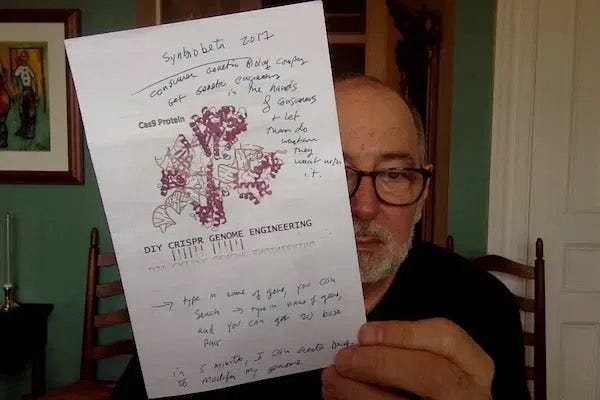
Biopunks around the world cheered Zayner’s bold self-editing gambit, while others — including me, as well as many sober scientists — thought it was mostly a poorly thought-out stunt. Josie Zayner herself later expressed second thoughts about the whole thing. Nevertheless there’s no doubt that it marked a kind of crossing-of-the-Rubicon in biohacking. Science fiction writers have been predicting genetic self-modification for decades, and Zayner made it real. This toothpaste is not going to go back into any tube.
I’ve never spoken to John Cumbers about the Zayner hack, but I expect that it is not the kind of thing he wants his conferences to be known for. Nevertheless there’s no doubt that it was an historic event, and, given what I’m trying to do for a living, I’m glad to be able to say that I was there in the proverbial room.
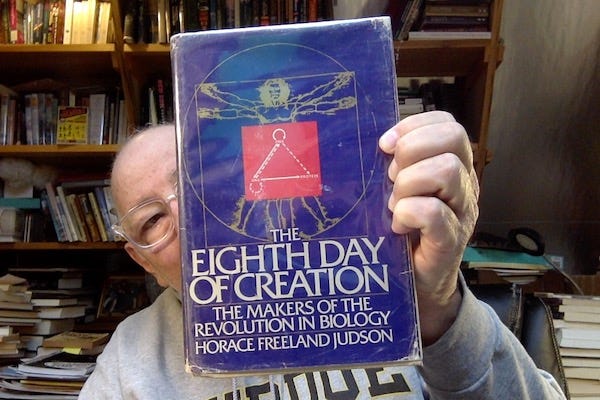
‘The Biodigital Forum’ brought to life
As long-time readers of Sundman figures it out! know well, I’ve been writing novels and essays about the convergence of biological and digital technologies for more than a quarter century.
If ‘cyberpunk’ is the genre that looks at digital systems from a hacker's point of view, then ‘biopunk’ looks at biological systems from a hacker's point of view.
Most non-biohacker/biopunk people make a distinction between, for example, living, carbon-based biological systems on one hand and silicon-based digital systems on the other. Biopunks don't make that distinction. A system is just a system, and the only question is, how do you hack it?
Now if the system is, for example, you — your brain, your mind, your essence, your soul — you may like it just fine the way it is, thank you very much, and you may not want somebody else (where "somebody" might be “the government” or some squicky corporation) to hack it. So your challenge becomes, How do I define who I am? How do I maintain the integrity of my system?
All my novels deal with themes like these. In Acts of the Apostles (1999), among other things, I imagined nanomachines analogous to bacteriophage that manipulate DNA and rearrange brains (and by rearranging brains, thus minds, and selves). In a lot of ways in Acts of the Apostles I anticipated CRISPR, the powerful new way of programming DNA that emerged about a decade ago. The plot of my novel revolves around how such a mechanism might work on the molecular level, and invites readers to ponder the ethical considerations that come with it.
A crucial scene in Acts of the Apostles takes place at a (fictional, of course) gathering of leading financial and technical lights from Silicon Valley and the biology labs of Stanford, MIT and Harvard, which I called ‘The Biodigital Forum.’
I wrote that scene, in 1998, with the intention making readers’ skins crawl. Synbiobeta is my ‘Biodigital Forum’ brought to life. It’s the mecca and Vatican of biodigital technopotheosis. I do love it. But sometimes it does make my skin crawl.
A phone call from John Cumbers
These conferences offer an intriguing mix of science, policy, futurism, industry boosterism and the occasional sideshow from outer space (like Zaynor’s self-edit) — the kind of thing you’d expect to see at DEF CON more than at a stolid scientific gathering — the perfect kind of place for me to hawk my novels, which John Cumbers, the founder & impresario of SynBioBeta, had allowed me to do a few times.
In the spring of 2016 I got a note from Cumbers’ administrative assistant asking me if I would take a call from him. I was surprised that he even remembered my name, but I said that I would of course be happy to talk to him. So at the appointed time John calls up and he says something to the effect that he’s frustrated by all the movies that come out of Hollywood about demented villains who use science to do evil things. What do we have to do, he asked, to get movies made that tell a more hopeful story, that show the real power of science to do good?
I told John that I didn’t know anything about getting movies made in Hollywood, but that I did, in fact, have a good friend (and SFIO! subscriber, Hi, David!) who had a long career in Hollywood as an actor, director and producer — including producing some science-themed television series — and that I would be happy to make an introduction. Then our conversation went something like this:
Me: You know, John, I'm one of those people who so frustrate you. I write novels about demented villains who use science to do evil things. Cumbers: Why is that? Why don't you write pro-science stories? Me: I don't do polemical art. I don't push any pro or anti-science agenda. I just try to tell stories that will keep readers turning the pages. My job as an artist is to raise important questions, not to answer them. Cumbers: [10 second pause.] How would you like to come to Scotland and give a talk? I can pay you $700.
Now as it turns out, my mother was an immigrant from Scotland who came to America after WW2. Her mother, brothers and sisters all eventually followed. I grew up in a family full of Scottish accents, but I had never been to Scotland. So of course I went to Scotland at John’s invitation. That June at the University of Edinburgh I gave a short talk: Art, Ethics and Synthetic Biology.
The $700 didn’t cover all of my expenses, but it helped a lot. I was there three days and I had an absolute blast. Among many other things I shared several pints with science fiction legend Ken MacLeod near the famous Forth Bridge. I should write about that sometime.
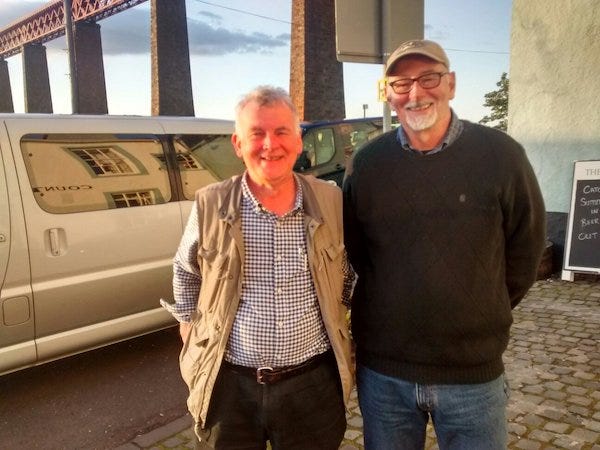
A year after I gave my short talk in Scotland, I was invited to be on a Synbiobeta panel on science and science fiction.
From the SBB18 program:
Science fiction is a powerful inspiration to innovators like Elon Musk and countless others who use emerging technologies like synthetic biology in creating our shared future. This session focuses on science fiction as a tool for reflection, discourse, and inspiration, all of which are essential for synthetic biology to evolve in the most ethical, meaningful, and awe-inspiring ways.
Being on that panel was great fun. The room was packed and the discussion was lively. Cumbers sat in the front row. (In retrospect the mention of Musk seems lamentable, but who knew then what we all know now?)
A George Church conundrum
George Church, a professor at MIT and Harvard, is a rock star in the world of synthetic biology, known for his work on the Human Genome Project including breakthroughs in DNA sequencing; for his work on CRISPR; for dozens of other significant scientific discoveries; for his efforts to bring the wooly mammoth back from extinction; and much more. He’s famous enough to have been a guest on The Late Show with Stephen Colbert. A few years ago the headline event at SynBioBeta was George Church being interviewed by Vinod Kholsa, (the Silicon Valley venture capital billionaire who co-founded Sun Microsystems, the one-time Darling of Silicon Valley, where I worked for nine years; that’s another story). That interview turned out to be a real snooze-fest, but Church is famous enough among biologists that just having him on stage being interviewed is enough to fill a large auditorium to standing-room-only.
So I was delighted when, in 2015, George Church, who is a fan of my novels, graciously wrote a glowing foreword to them. When he joined twitter ~2015, his inaugural tweet was about my books.
But in recent years Church has become known for less savory things, including reputation-laundering for the serial child rapist, pimp, and blackmailer Jeffrey Epstein, and for espousing a transhumanist philosophy which, depending on how you look at it, is either very close to, or outright is, a very ugly eugenicism.
Eugenics is a set of beliefs and practices that aim to improve the genetic quality of a human population. Often deemed a pseudoscience, historically, eugenicists have attempted to alter the frequency of various human phenotypes by inhibiting the fertility of people and groups they considered inferior, or promoting that of those considered superior. The contemporary history of eugenics began in the late 19th century, when a popular eugenics movement emerged in the United Kingdom, and then spread to many countries, including the United States, Canada, Australia, and most European countries. Wikipedia
George Church is, or was(?), a friend of mine. I have interviewed him for my youtube channel. He came to Martha’s Vineyard to give a lecture as part of a series that my wife organized at the Vineyard Haven Public Library. I even got permission to take him 100 feet aloft in the bucket of a ladder truck when I was a Tisbury firefighter.
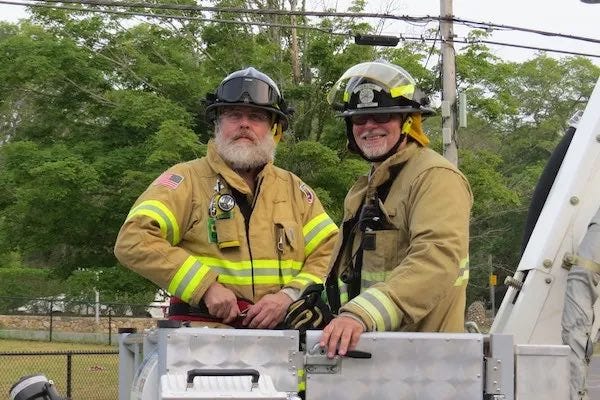
But that was all before I became aware of the Epstein stuff, or of the eugenic stuff. He has apologized for the Epstein relationship, but really, I, like many people find his explanation hard to swallow. And the (quasi?) eugenic stuff? Ugh.
So now, in truth, I don’t know what the hell to think about him. If I ever see George Church again I don’t know what I’ll say to him. It’s so monstrously disappointing.
Or am I being unfair? I would appreciate hearing your thoughts in the comments.
The life-changing power of fiction
At Synbiobeta 2016 I sold a copy of my book Biodigital to a biology undergrad. A few weeks later his review was posted on Goodreads, which I’ve lightly edited & excerpted below.
I met John Sundman at the Synbiobeta 2016 conference in San Francisco, where he was selling his books. As a book snob, I have always been wary of authors I haven't heard of. However, I decided to go with my gut and buy "Biodigital." [. . .]
Before I say anything about the book, I have to mention that "Biodigital" persuaded me to apply for PhD programs at Tufts University after hearing about the character Bartlett's career at Tufts. I am now beginning my PhD program at Tufts University in biomedical engineering this fall (2017). Biodigital has made a 5.5 year impact on my life.
This book had me hooked. Hooked. I dropped everything else I was reading (which is saying a lot for me; I am currently reading 10 books) to read Biodigital. The science is sound--I have done years of research in organic chemistry and was happily surprised when hearing Sundman's description of Diels-Alder adducts for a specific technology mentioned in the book. Everything else is scientifically feasible as far as I can tell, and the scientific descriptions were a true pleasure to read. The story line is engrossing and still leaves me wary of the motives of some real biotech companies. This book really makes you think about the role of industry in science in the 21st century.Even if you don't consider yourself tech-savvy, this novel is probably the most interesting mystery/cerebral book you'll read all year.
Isn’t that grand? Wouldn’t you like to write a book that had a 5.5 year impact on someone’s life? It’s a great feeling, I assure you. Anyway, stuff like that is why I got invited to be on this year’s panel.
The Apotheosis of Biohacking
This guy, Bryan Johnson, gave the opening keynote at Synbiobeta 2018. I’m almost out of space for this post so I’ll just let you google him yourself. After seeing the rapturous reaction to his opening remarks and then attending his workshop on ‘How to future-proof yourself’ I really truly felt like I was living in one of my novels.
In his ‘future-proofing’ workshop, Johnson told us how, first thing every morning, he ‘cleanses his mind’ of ‘18 cognitive biases’. In the Q&A after his presentation, he and I had this exchange:
Me: You spoke about your new way of imagining possible futures. But you didn't mention the people who've been doing exactly that for 100-plus years. I'm thinking of futurists and writers of science fiction, for example. Johnson: No, no, not science fiction. I'm talking about something different. New philosophies, new epistemologies, new morality, entire new modes of cognition. Me: I think that perhaps that speaks more to your ignorance of science fiction than it does to the concerns of the genre. Johnson: [Short pause as he checks his cognitive biases, then smugly, dripping with condescension] No, I don't think so.
It was absolutely perfect! His actual bio-digital brilliance (he is a really smart guy, with genuine accomplishments in both digital & biological realms) combined with his impermeable narcissism! The brilliance! The colossal arrogance and self-satisfaction! What a joy to behold! Here before me stood my own character Monty Meekman, made flesh! What a gift!
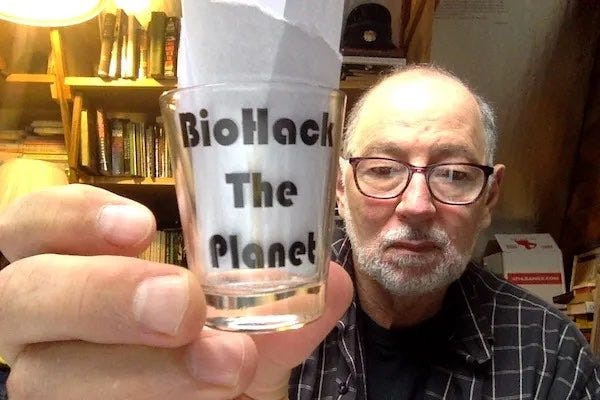
Why I’m going to San Jose
Ever since the run up to the Second World War, the United States of America has been the worldwide leader in all kinds of scientific research, welcoming scientists from every corner of the globe, forming enormously productive partnerships between universities and the federal government to both explore new scientific realms and train new scientists.
Over more than seventy years a complex infrastructure, a glorious cathedral, of interlocking federal agencies, public and private universities, nonprofit research institutions and professional societies has been built by tens of thousands of people working towards a common goal. The scientific establishment in the United States of America is one of the great achievements of humankind.
Trump and the Republicans are out to destroy it. They are well on their way.
All across the USA, anti-scientific mobs with virtual chainsaws and burning torches look for research laboratories to vandalize, public health programs to destroy, libraries to incinerate, and scientific careers to foreclose.
Meanwhile, in Silicon Valley, techbros are giddily pursuing eternal life for the New Gods and pondering how to make eugenics maximally profitable — and some of those dudes are on the 2025 Global Synthetic Biology program. This shit is like all of my dystopian novels put into a Waring blender with some LSD and steroids.
Yet astounding advances in biological science keep happening despite everything. If there’s anyplace on Earth where I would like to go to get a feel for what’s going on in the land of technopothesis, of biodigital convergence, of science in general, it’s the 2025 Global Synthetic Biology Conference.
So I’m heading to San Jose to see what I can see.
An appeal
I’m just a poor writer. I can barely afford the cheapest flight from Boston to San Jose and a 3-night stay at the cheapest hotel in town. If you enjoy my kind of reporting and would like to help out, please consider upgrading to a paid subscription, or making a one-time contribution.
Cheerio!
P.S. An autographed copy of my illustrated dystopian phantasmagoria to the first person who catches the allusion to the waring blender.
UPDATES AFTER SENDING THE EMAIL
Reader John M. Kelly succinctly, and correctly, posts “Martha Chase 1952.” I refer you to this article about the Hershey-Chase experiments by Alfred Hershey and Margaret Chase, in 1952, which pretty much proved that DNA, not protein, carried genetic information. Hershey was awarded a Nobel Prize for this work. Chase, being a woman, was not. But history notes that she supplied the Waring blender.
A certain busybody critic chimes in, offline. “I didn’t jab my hand. The syringe was clogged with [redacted] and when I pushed hard to force it the stuff in the syringe went into my eye. I never jabbed my hand. Also, I said twenty years, not thirty.” These critics, oy. Always looking for a picayune gotcha. Somebody should tell them to get a life. Sheesh.
My post-Synbiobeta reports
I was in the house when the house burned down: SynbioBeta 2025 — a failure of a synthetic biology conference
My dismay at the failure of SBB’s main speakers to acknowledge what’s being done to science in America; experiencing a technology that I described in my scarily prescient 1999 novel Acts of the Apostles; Bio-saftety, biosecurity and a bullshit presentation by a U.S. Senator, and impressions from the SBB panel Culture Drives Science, on which I was a panelist.
Oligarchs triumphant and biopunks rave as Lysenko returns from the grave — further thoughts on Synbiobeta 2025
I put my heart into this 👇 essay about synthetic biology; oligarchicly-funded vs publicly funded science; George Church & the dire wolf brouhaha; the unsung hero of the Human Genome Project; biopunks; cowardice at Synbiobeta 2025; and the fate of humanity.




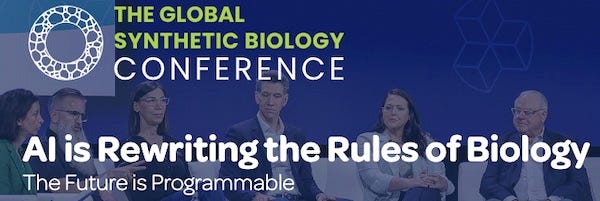
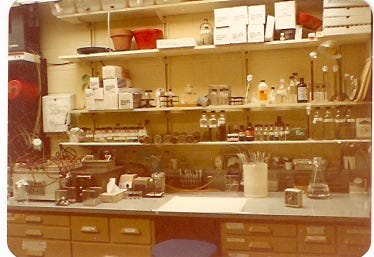



Thank you for both entertaining and thought provoking writing as always. I've been reading your posts via email but some of the stuff here stirred up some old memories with me, so I thought I'd leave a comment here.
I work minimum wage warehouse & manual labor jobs while running a sequencing lab focusing on microbial evolution - and have been lucky enough to discover a few things, enough to write some research papers and present at academic conferences.
I've been at this for about 17 years now - and had the mis/fortune of getting involved with diybio, biohackerspaces and iGEM since the very early days (Sung from NYC- we met a few times, I even got copies of your books!).
As someone more familiar with 'punk side of things, I have to say venues like SBB, or specifically its underlying current to constantly co-opt and associate itself to some sort of cultural moment to be a bit of a joke. It's a trades show. Like association of condo salespeople at Grand Rapids, except with huge egos on parts of the leadership. At least condo salespeople have the decency to not paint themselves up as some renaissance men who deserves to be held on a pedestal on topics of education, arts, politics, literal future of humanity and etc etc.
Now - this is an incendiary statement and some would be fully justified in their disagreement. And I'm sure some great people who do have insights on those topics end up attending these conferences too (such as yourself).
What I want to draw attention to is the danger of co-opting 'punk for sake of the establishment, since it essentially de-fangs legitimate criticism against the status quo.
Here's what I had to see in the last few years - a nice kid with some skill in yeast engineering technique got chewed up by a garbage truck uptake mechanism while working to pay the bills. A hard working evolutionary biology student from a city university system gave up her study and got into food delivery - a nutso spat on her for being late on a rainy day. I can sit here and write up a laundry list of horror stories all night.
We actively punish people from not-middle/upper middle class and not-elite institutions for the transgression of loving biology, or studying life for its own sake. And against that backdrop, the bizarre counterculture attitude of people in a bubble who never worked retail in their lives purporting to represent some new age for humanity is simply shallow and soulless. The great entrepreneur movement might as well be a welfare program for graduates of elite institutions, again shrouded in some shallow cover of 'culture' and 'punk'.
Anyways, pardon the rant! I had to get this one off my chest.
p.s. regarding George Church, he's old enough to know what eugenics is and what sort of harm it could pose - and he made his call. At the very least the man is tasteless.
I hope you enjoy SynBioBeta - the early days were really wild, but things have gotten increasingly corporate over the years (less interesting?). But, recent chaos / funding downturn / "trough of disillusionment" might make for a more interesting show. I think the biotech frontier is probably somewhere else now: biohackers doing lab experiments in their bedroom or scientists like Mike Levin at Tufts. I have to work very hard at not being a "hater" - keeping a beginner's mind and an openness to the strange. This includes tolerance of mistakes or moral grey areas (eg George Church). Hopefully you'll keep your eyes open, keep dreaming, and keep writing about how biotech may change humanity's future from within and without.